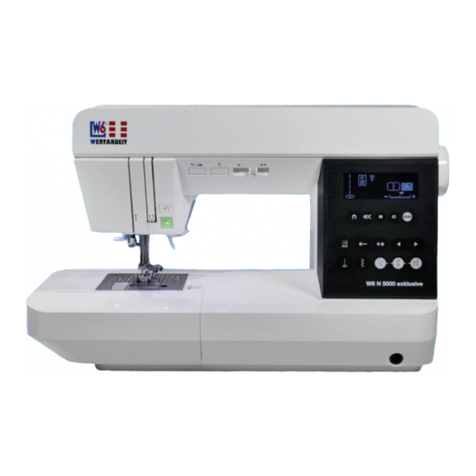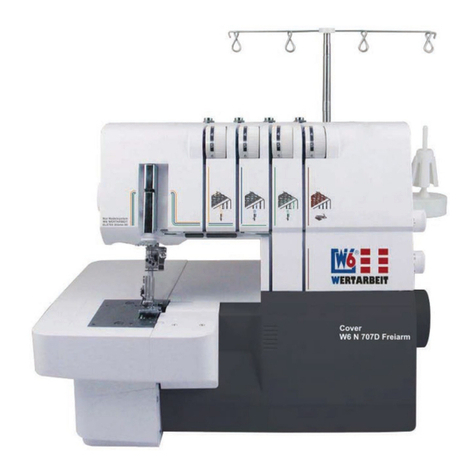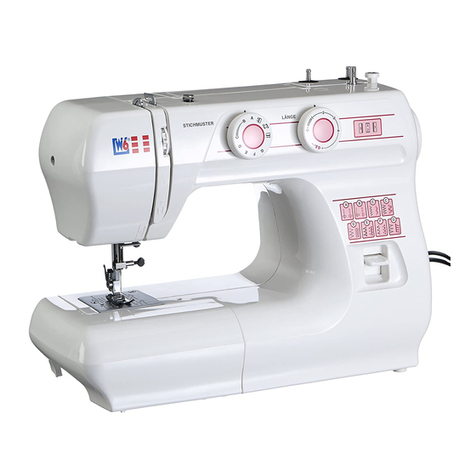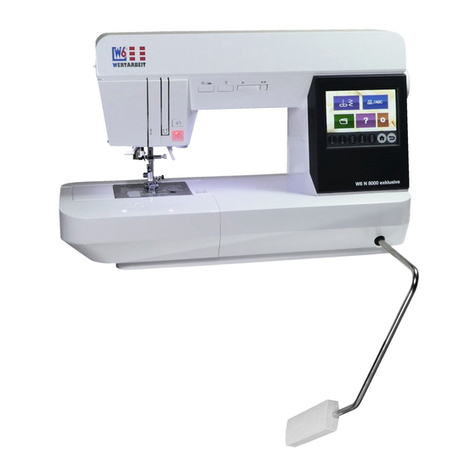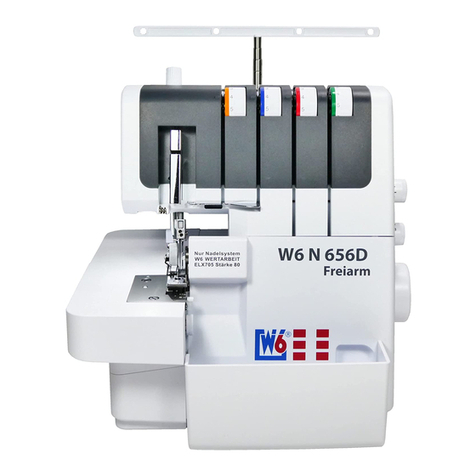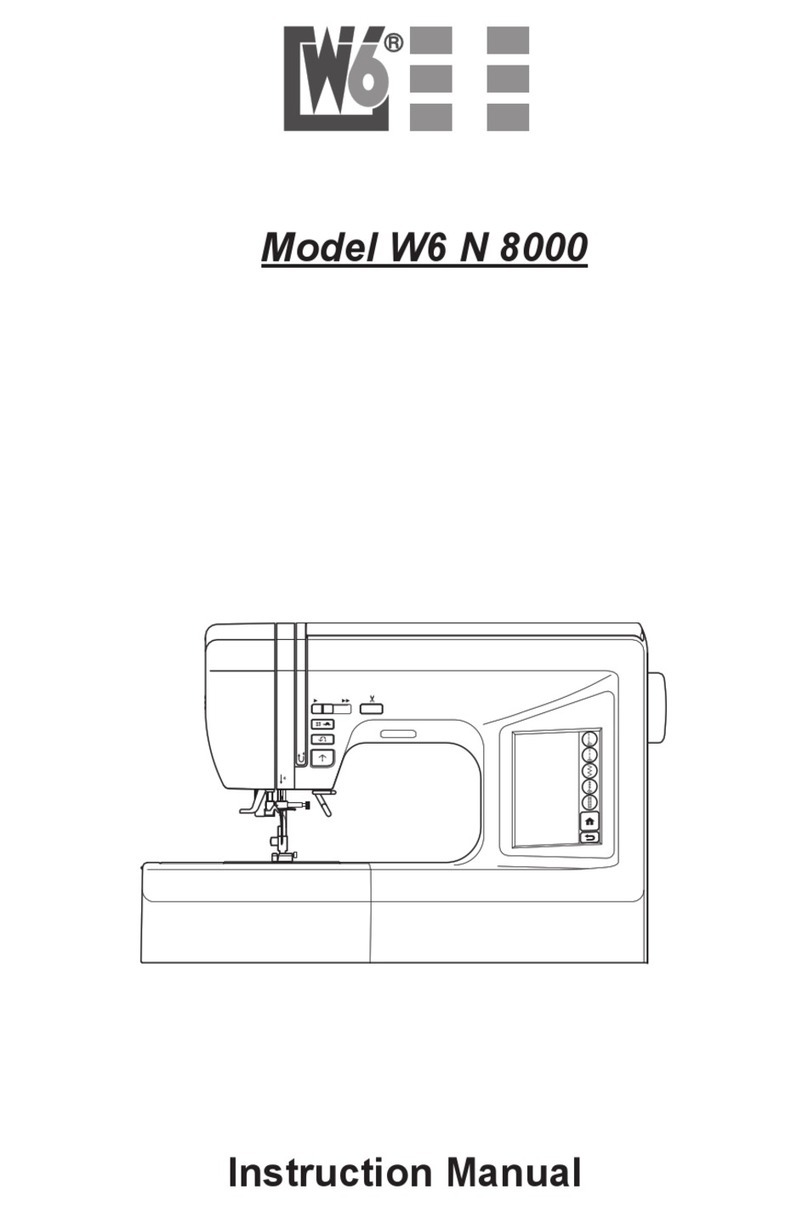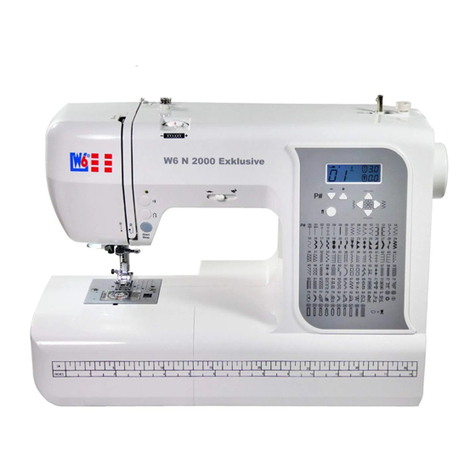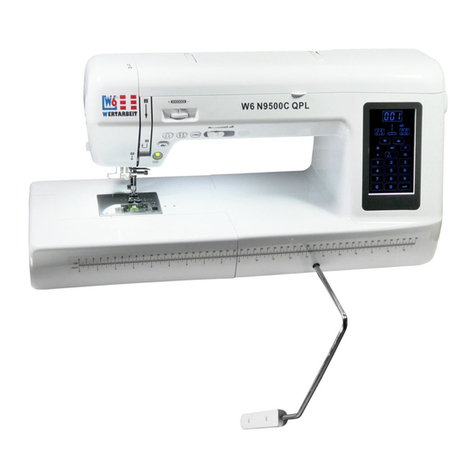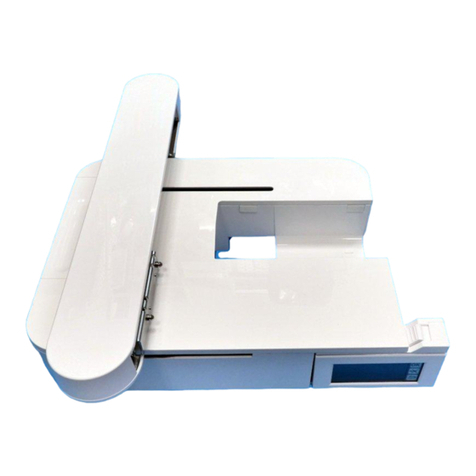
www.w6-wertarbeit.de 3
Useful tips.............................................................................................................................................................................. 26
Sewing corners............................................................................................................................................................... 26
Sewing at edges at a spacing of less than 3 mm............................................................................................................ 26
Sewing curves ................................................................................................................................................................ 26
Sewing thick fabrics........................................................................................................................................................ 27
Sewing thin fabrics ......................................................................................................................................................... 27
Using the needle plate.................................................................................................................................................... 27
Pattern overview table .......................................................................................................................................................... 28
Straight stitch........................................................................................................................................................................ 30
Stretch straight stitch ...................................................................................................................................................... 30
Zigzag stitch .......................................................................................................................................................................... 31
Overlocking..................................................................................................................................................................... 31
Appliqués........................................................................................................................................................................ 31
Patchwork....................................................................................................................................................................... 31
Sewing curves ................................................................................................................................................................ 31
Satin stitch...................................................................................................................................................................... 31
Closed/special overlock stitch............................................................................................................................................. 32
Lingerie stitch ....................................................................................................................................................................... 32
Elastic blind stitch ................................................................................................................................................................ 33
Buttonholes ........................................................................................................................................................................... 34
Sewing stretch fabrics .................................................................................................................................................... 35
Sewing in zippers.................................................................................................................................................................. 36
Darts....................................................................................................................................................................................... 37
Gathering ............................................................................................................................................................................... 38
Securing the gather .............................................................................................................................................................. 39
Decorating garments ...................................................................................................................................................... 39
Tucks...................................................................................................................................................................................... 40
Decorating blouses, shirts, etc........................................................................................................................................ 40
Appliqués............................................................................................................................................................................... 41
Corners and curves of appliqués .................................................................................................................................... 41
Decorative stitches ............................................................................................................................................................... 42
Elastic decorative stitch .................................................................................................................................................. 42
Double action stitch.............................................................................................................................................................. 42
Darning .................................................................................................................................................................................. 43
Darning using an embroidery frame ............................................................................................................................... 43
Maintenance .......................................................................................................................................................................... 44
Cleaning the sewing machine case ................................................................................................................................ 44
Cleaning the hook........................................................................................................................................................... 44
Changing the light bulb ........................................................................................................................................................ 46
Troubleshooting.................................................................................................................................................................... 47
Problems with threads and stitches ................................................................................................................................ 47
Checking the lower thread tension ................................................................................................................................. 48
Service information............................................................................................................................................................... 49
Notes on environmental protection..................................................................................................................................... 50
Index....................................................................................................................................................................................... 51
